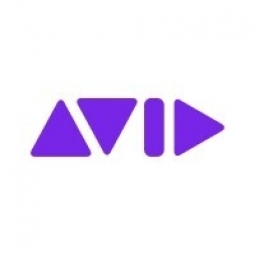Technology Category
- Analytics & Modeling - Computer Vision Software
- Platform as a Service (PaaS) - Application Development Platforms
Applicable Industries
- Education
- Equipment & Machinery
Applicable Functions
- Logistics & Transportation
Use Cases
- Counterfeit Product Identification
- Visual Quality Detection
About The Customer
The customer in this case is acclaimed Hollywood editor William ‘Billy’ Goldenberg, ACE. Goldenberg has a long history of crafting intense thrillers, having previously won the 2013 Oscar® for Best Film Editing for Argo. He has also been nominated for several other Academy Awards, including for his work on Seabiscuit (2003) and The Insider (1999). Goldenberg has built strong working bonds with directors Kathryn Bigelow, Ben Affleck, and Michael Bay. He is known for his meticulous attention to detail and his ability to bring a director's vision to life on the big screen. For The Imitation Game, Goldenberg was tasked with cutting the complex and cryptic storyline, a task made more challenging by the transatlantic divide between the editing team and the director.
The Challenge
The challenge was to overcome a transatlantic divide to bring the OSCAR®-nominated thriller The Imitation Game to life. The film, based on the true story of British cryptanalyst Alan Turing, was set during World War II and required a high level of precision in editing to accurately depict the race against time to crack Nazi Germany's naval Enigma code. The editing team, led by Academy Award-winning editor William Goldenberg, was based in Los Angeles, while the production crew was shooting in various locations around England. This geographical barrier posed significant challenges, including time zone differences and the need for a fast turnaround of footage. Budget constraints meant that the editing team could not travel to the shooting locations, further complicating the process. The team needed to maintain a 24/7 editing operation to keep up with the production schedule.
The Solution
To overcome these challenges, Goldenberg and his team embraced Avid Everywhere, implementing the Avid MediaCentral platform and Media Composer. These tools enabled the team to run a 24/7 editing operation, despite the geographical distance and time zone differences. The footage was sent electronically from the shooting locations in England to the editing base in Santa Monica within a 24-hour timeframe. This allowed the team to work at the same rate that the footage was being captured, ensuring they were on top of the production at all times. Media Composer's versatility allowed Goldenberg to present scenes that looked like finished scenes, complete with stereo sound effects, stereo music, and visual effects. This gave a visual representation to the producers and director of what the finished movie would look like, facilitating collaboration and feedback.
Operational Impact
Quantitative Benefit

Case Study missing?
Start adding your own!
Register with your work email and create a new case study profile for your business.
Related Case Studies.

Case Study
Smart Water Filtration Systems
Before working with Ayla Networks, Ozner was already using cloud connectivity to identify and solve water-filtration system malfunctions as well as to monitor filter cartridges for replacements.But, in June 2015, Ozner executives talked with Ayla about how the company might further improve its water systems with IoT technology. They liked what they heard from Ayla, but the executives needed to be sure that Ayla’s Agile IoT Platform provided the security and reliability Ozner required.

Case Study
IoT enabled Fleet Management with MindSphere
In view of growing competition, Gämmerler had a strong need to remain competitive via process optimization, reliability and gentle handling of printed products, even at highest press speeds. In addition, a digitalization initiative also included developing a key differentiation via data-driven services offers.

Case Study
Predictive Maintenance for Industrial Chillers
For global leaders in the industrial chiller manufacturing, reliability of the entire production process is of the utmost importance. Chillers are refrigeration systems that produce ice water to provide cooling for a process or industrial application. One of those leaders sought a way to respond to asset performance issues, even before they occur. The intelligence to guarantee maximum reliability of cooling devices is embedded (pre-alarming). A pre-alarming phase means that the cooling device still works, but symptoms may appear, telling manufacturers that a failure is likely to occur in the near future. Chillers who are not internet connected at that moment, provide little insight in this pre-alarming phase.

Case Study
Premium Appliance Producer Innovates with Internet of Everything
Sub-Zero faced the largest product launch in the company’s history:It wanted to launch 60 new products as scheduled while simultaneously opening a new “greenfield” production facility, yet still adhering to stringent quality requirements and manage issues from new supply-chain partners. A the same time, it wanted to increase staff productivity time and collaboration while reducing travel and costs.

Case Study
Integration of PLC with IoT for Bosch Rexroth
The application arises from the need to monitor and anticipate the problems of one or more machines managed by a PLC. These problems, often resulting from the accumulation over time of small discrepancies, require, when they occur, ex post technical operations maintenance.

Case Study
Robot Saves Money and Time for US Custom Molding Company
Injection Technology (Itech) is a custom molder for a variety of clients that require precision plastic parts for such products as electric meter covers, dental appliance cases and spools. With 95 employees operating 23 molding machines in a 30,000 square foot plant, Itech wanted to reduce man hours and increase efficiency.



